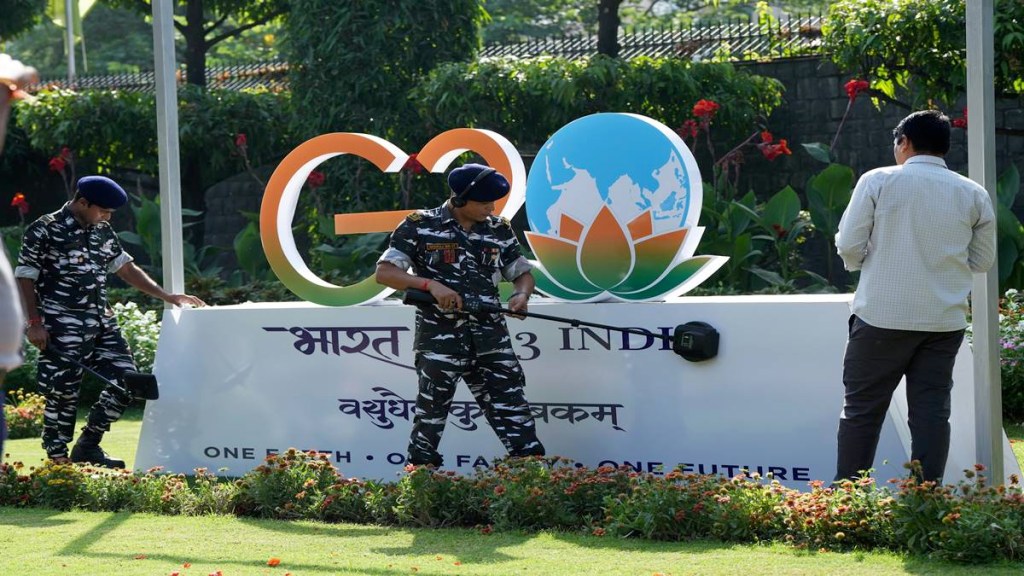When you read this column on Sunday, September 3, 2023, the propaganda and hype surrounding the forthcoming G-20 meeting would have reached a crescendo. I am happy that India is hosting the G-20 Summit this year but it is wise to be more modest about the event and its outcome.
Why do I say so? Because the G-20 meetings are routine and have been held every year since 1999. The first Summit of heads of government was held in Washington in 2008 (in the wake of the international financial crisis). Between two G-20 meetings, the leaders have several opportunities to meet under different banners — UN, G-7, WEF, IPCC, SCO, BRICS, QUAD, AUKUS, ASEAN, UNCTAD, and so on. The joke is, if you take any four or five alphabets of the English language, the chances are it will denote a new multilateral body!
Modesty is becoming
The Chair of the G-20 goes by rotation. India was the Chair in 2003 and is the Chair in 2023. India will be the Chair again in 2043. There are reasons for India to be modest. Of the G-20 member-countries, India has the lowest income per capita ($2,085), largest number of poor (230 million), and a rank of 107 (out of 123) in the Global Hunger Index.
That is not to belittle India’s development since 1991. Only a few countries have doubled their GDP in constant prices roughly every 10 years:
1991-92 Rs 25 lakh crore
2003-04 Rs 50 lakh crore
2013-14 Rs 100 lakh crore
Despite a sound start in 2014-15, the GDP will not double by 2023-24 and that will be a wasted opportunity. The reason is that the average rate of growth during the 9 years of the NDA has been only 5.7% as against the 7.5% during the 10 years of the UPA. Since 2004 we have lifted 415 million people out of poverty; yet 230 million are poor. This is despite the poverty bar being low — personal consumption of `1,286 per month in urban areas and `1,089 per month in rural areas. We have the scientific skills to land a probe on the moon but, among children in Class VIII, 30% cannot read a Class II text and 55% cannot do simple multiplication and division. The taste of our development is bitter sweet.
Malignant warts
Our stock in the world will rise —
- if we burnish our democratic credentials and practise liberalism, pluralism and equal respect for all religions;
- if Parliament and State legislatures hold more discussions, allow more dissent and pass legislation after thorough scrutiny and debate;
- if the rule of law prevails at all places and at all levels and we banish ‘bulldozer’ justice, lynching and hate crimes;
- if we are market-friendly (as opposed to businesspersons-friendly) and open our economy wider to investment, technology and competition;
- if our key institutions such as Courts, Election Commission of India, C&AG, Human Rights Commission and Information Commission are truly independent and non-partisan; and
- if the investigative agencies do not become a law unto themselves and overawe all persons, institutions and political parties.
If we think that only resident Indians see our fault lines and failures, we are living in a fool’s paradise. Just as we notice the autocracies of the world, the sham elections, the widespread racism, the repression of women, the denial of political and human rights, the tribal wars and the corporate monopolies — and freely comment upon them — the world notices our failures.
Economic worries
In the present context, the G-20 are very worried about the world’s economy. All economists agree that growth is a tide that lifts nearly all boats. I have seen how economic prosperity has ‘civilised’ even the behaviour of people, public conduct and the language of common discourse. (One no longer hears as much ‘Madras Tamil’ as one did in the ‘60s and ‘70s in Chennai.)
Why are some countries rich and how did they become rich? In my view, they did four things: invested in infrastructure, spent on education, spent on health, and freely traded with other countries. India is doing these things only partly right. We are investing in infrastructure but not enough. Our expenditure on education (3% of GDP) and health (1.4% of GDP) is low. And, after historic trade reforms, we are pulling down the shutters through retrograde measures such as hike in customs tariff, export duties, import licensing, country-specific duties, and foot-dragging in entering into free trade agreements.
The other worrying development is the growing inequality. The rise in the average income of the approximately 7 crore Income Tax return filers (over one-half file nil tax returns) is celebrated as a rise in the income of all 140 crore Indians. When the unemployment rate is 8.5% and the unemployment rate among 15-24 years-old youth is 24%, how could all Indians have become richer? When the bottom 50% of the population earns only 13% of the nation’s income and owns only 3% of the nation’s wealth, how could all Indians be rich?
The leaders of the world’s 20 largest economies will be here to take a close look at India and its economy. I wish we would take a closer look at ourselves.

